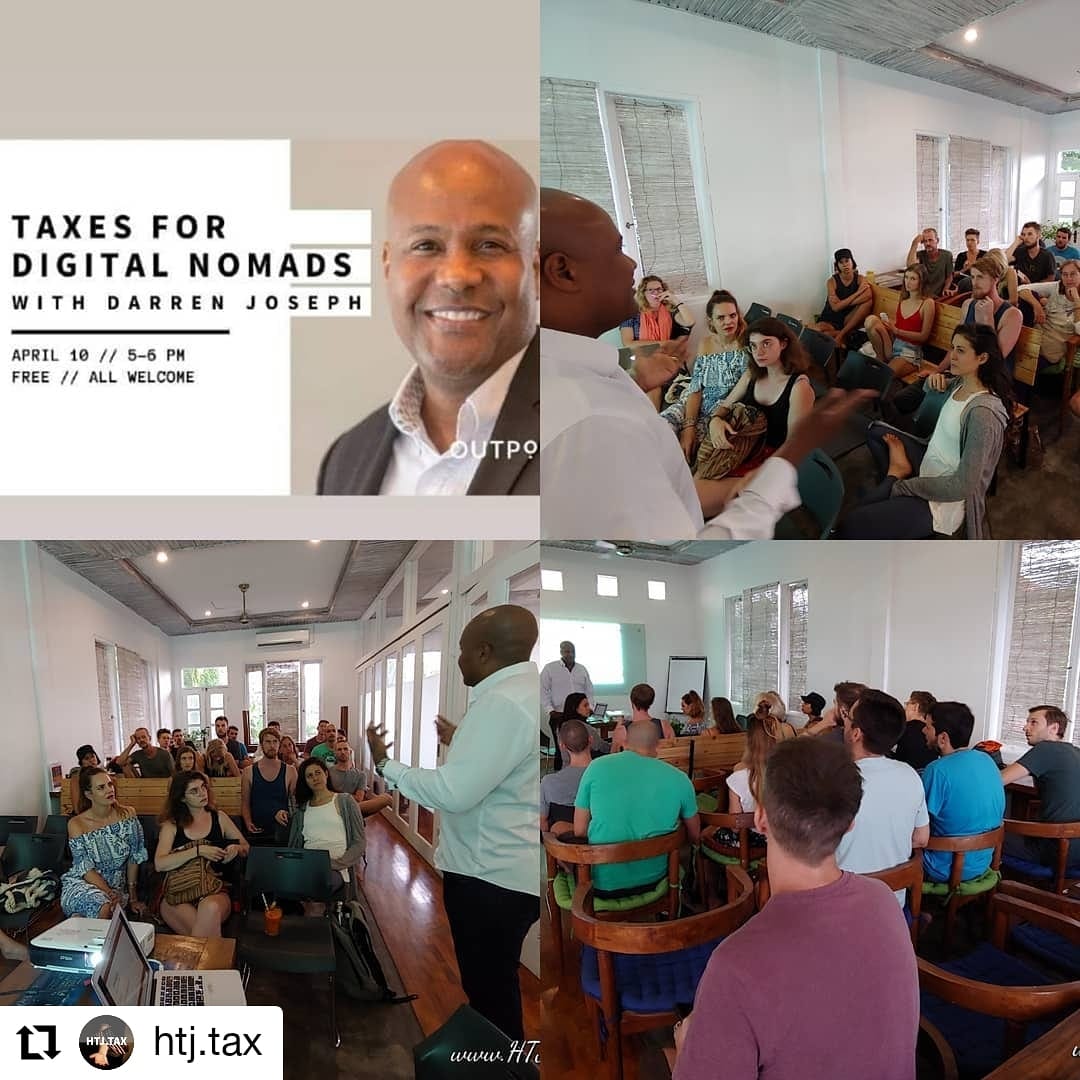OVDP was withdrawn
– http://www.mooresrowland.tax/2018/03/the-offshore-voluntary-disclosure.html
In early November 2018, the IRS made the following announcement – http://www.mooresrowland.tax/2018/11/new-irs-compliance-campaigns-related-to.html
In late November, 2018, we received a Memorandum from Kristen B. Wielobob, Deputy Commissioner for Services and Enforcement, re Voluntary Disclosure Practice (LB&I-09-1118-014 dated 11/20/18), https://drive.google.com/open?id=1un1DyuAQ480S1cvAL9YLNjh08OaUUUmc.
Summary of the memo from https://ecoteam.wpmudev.host/2018/11/new-irs-voluntary-disclosure-procedures.html is as follows –
Note: The above reference link was live on April 2019, but it has since been taken down.
1. The guidance applies to all voluntary disclosures, whether offshore or otherwise, received after 9/28/18. Readers will recall that that date was the conclusion of the IRS’s OVDP 2014, the program (with predecessors) that applied to offshore voluntary disclosures. But, remember that this guidance applies to all voluntary disclosures.
2. Voluntary disclosures are for the bad actors — those with potential criminal exposure. Here is the relevant paragraph:
The objective of the voluntary disclosure practice is to provide taxpayers concerned that their conduct is willful or fraudulent, and that may rise to the level of tax and tax-related criminal acts, with a means to come into compliance with the law and potentially avoid criminal prosecution.
For those without criminal exposure, as with OVDP, the IRS has other procedures, including filing amended returns (that may be qualified amended returns avoiding the accuracy related penalties) and the special procedures for correcting offshore filings outside OVDP. (see streamlined here https://www.htj.tax/
3. The practice covers tax and tax-related criminal acts, so tax-related FBAR violations are included.
4. Voluntary disclosure starts with the taxpayer submitting to CI a preclearance request under Form 14457
5. Upon acceptance, the taxpayer is notified and the case then processed for civil examination (going through LB&I Austin). The case will be transferred to the appropriate civil division for examination. All voluntary disclosures will follow “standard examination procedures,” requiring that examiners develop the case with its usual information gathering tools.
6. The civil resolution framework (apparently inspired by OVDP and its various iterations) is (this is just cut and paste because the actual wording is so important):
a) In general, voluntary disclosures will include a six-year disclosure period. The disclosure period will require examinations of the most recent six tax years. Disclosure and examination periods may vary as described below:
i. In voluntary disclosures not resolved by agreement, the examiner has discretion to expand the scope to include the full duration of the noncompliance and may assert maximum penalties under the law with the approval of management.
ii. In cases where noncompliance involves fewer than the most recent six tax years, the voluntary disclosure must correct noncompliance for all tax periods involved.
iii. With the IRS’ review and consent, cooperative taxpayers may be allowed to expand the disclosure period. Taxpayers may wish to include additional tax years in the disclosure period for various reasons (e.g., correcting tax issues with other governments that require additional tax periods, correcting tax issues before a sale or acquisition of an entity, correcting tax issues relating to unreported taxable gifts in prior tax periods).
b) Taxpayers must submit all required returns and reports for the disclosure period.
c) Examiners will determine applicable taxes, interest, and penalties under existing law and procedures. Penalties will be asserted as follows:
i. Except as set forth below, the civil penalty under I.R.C. § 6663 for fraud or the civil penalty under I.R.C. § 6651(f) for the fraudulent failure to file income tax returns will apply to the one tax year with the highest tax liability. For purposes of this memorandum, both penalties are referred to as the civil fraud penalty.
ii. In limited circumstances, examiners may apply the civil fraud penalty to more than one year in the six-year scope (up to all six years) based on the facts and circumstances of the case, for example, if there is no agreement as to the tax liability.
iii. Examiners may apply the civil fraud penalty beyond six years if the taxpayer fails to cooperate and resolve the examination by agreement.
iv. Willful FBAR penalties will be asserted in accordance with existing IRS penalty guidelines under IRM 4.26.16 and 4.26.17.
v. A taxpayer is not precluded from requesting the imposition of accuracy related penalties under I.R.C. § 6662 instead of civil fraud penalties or non-willful FBAR penalties instead of willful penalties. Given the objective of the voluntary disclosure practice, granting requests for the imposition of lesser penalties is expected to be exceptional. Where the facts and the law support the assertion of a civil fraud or willful FBAR penalty, a taxpayer must present convincing evidence to justify why the civil fraud penalty should not be imposed.
vi. Penalties for the failure to file information returns will not be automatically imposed. Examiner discretion will take into account the application of other penalties (such as civil fraud penalty and willful FBAR penalty) and resolve the examination by agreement.
vii. Penalties relating to excise taxes, employment taxes, estate and gift tax, etc. will be handled based upon the facts and circumstances with examiners coordinating with appropriate subject matter experts.
viii. Taxpayers retain the right to request an appeal with the Office of Appeals.
d) The Service will provide procedures for civil examiners to request revocation of preliminary acceptance when taxpayers fail to cooperate with civil disposition of cases.
Note –
1. The civil fraud penalty in § 6663 will apply only to the high year in the covered period. I don’t see it in the policy, but I presume that the accuracy related penalties § 6662 for the other years are not forecloses. In this regard, that seems to the be inference in the provision permitting a taxpayer may request accuracy related penalties in lieu of civil fraud and FBAR penalties. (Another observation, persons who might qualify for that “relief” would seem to be those persons who probably should not have invoked the voluntary disclosure procedure to begin with, but may have done so protectively.)
2. Taxpayers may invoke the right to an Appeals conference.
——————–
Notes on the new Form 14457 from https://ecoteam.wpmudev.host/2019/04/new-form-14457-voluntary-disclosure.html
Note: The above reference link was live on April 2019, but it has since been taken down.
The form is now out. See Form 14457, Voluntary Disclosure Practice Preclearance Request and Application, here. (The Form is a fillable pdf that may not show in some browsers and may need to be downloaded to actually view and fill out the form.)
The following are my quick observations.
1. The Form consists of two Parts. Part I is submitted as the request. Part II is submitted after preclearance is granted. The Form is for both domestic and offshore issues.
2. General comments. The disclosures required are quite robust and are of the type that can be databased with appropriate fields that will likely permit computer analytics in the process of identifying which disclosures may need extra attention by the IRS and permit some cross-checking for identified persons and entities.
3. Part I Disclosures (L. refers to the numbered items, e.g.,L. 3):
a. L. 3 asks for “Disclosure special features” with check boxes related to common types of noncompliance but with an “Other Issues” check box that, if checked, need to provide a textual description.
b. LLs. 4-7 asks for detailed identity information for the taxpayer making the request plus any entities for whom the request is being made.
c. L. 8 asks “Do you believe that the IRS has obtained information concerning your tax liability.” Since a taxpayer is not qualified for VDP if the IRS is already on the trail, this question is designed to flush out the taxpayer’s knowledge about that early on.
d. L. 9 asks “Disclose if you, your spouse or any related entities are currently under audit or criminal investigation by the Internal Revenue Service or any other law enforcement authority and if any income is sourced from an illegal activity.” This is a pretty broad question but seems to apply only to the spouse (not siblings, parents or children or others) and “related entities.” Related entities may need some definition, but certainly entities in which the taxpayer is title or beneficial owner would be included, although the quantum of the title or beneficial ownership relative to others is not stated. Interestingly, the question as asked does not include related individuals (other than spouse), such as partners who, under prior iterations of the VDP might be a disqualified.
e. L. 10 asks for a list of “ALL noncompliant financial accounts you owned or controlled or were the beneficial owner of, either directly or indirectly.” The period covered is the six year disclosure period.
f. Interestingly, the taxpayer is not required on Part I to quantify the tax amounts involved.
4. Part II Disclosures (to be completed only after preclearance based on Part I):
a. L. 3 provides check boxes similar to Q. 3 of Part I.
b. L. 4 asks if the taxpayer has taken a position that he or she was a bona fide resident of a U.S. territory (e.g., American Samoa, the Commonwealth of the Northern Mariana Islands, Guam, Puerto Rico, or the U.S. Virgin Islands) or did you file an income tax return with a U.S. territory?” and explain if yes.
c. Ls. 5&6 ask about the quantum of unreported income and graduated brackets (e.g., 0-$50,000, $50,000 to $100,000, etc.) and for the high aggregated balance in offshore accounts.
d. L. 7 for Offshore Issues only asks about “anyone including a foreign government or a foreign financial institution” advised the taxpayer “that your offshore account records, which are the subject of this voluntary disclosure, were susceptible to being turned over to the U.S. Government pursuant to an official request?” If yes, then the taxpayer must disclose whether anyone submitted documents in opposition to disclosure and notified the Attorney general as required by 18 USC §3506.
e. L. 8 requires, for the disclosure period, a list of ALL entities you owned or controlled or were the beneficial owner of, either directly or indirectly for which you reported noncompliant financial accounts in the Part I preclearance request.





